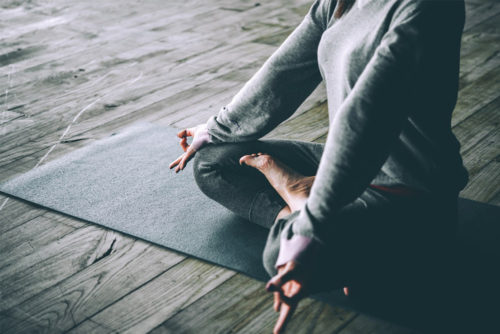
Just as your bioidentical hormone prescription is written to suit you, and your personal trainer will work with you on your fitness goals, a daily yoga practice that is specific to your body and your concerns will serve you better over time than a weekly group class. To be safe a group class must accommodate a range of ability, age and physical limitation so it will always be a compromise. Working one to one with a yoga teacher for a few private lessons can really help with designing a practice that is appropriate just for you. You can also experiment with some postures at home. Start noticing what effects they have so that you can apply them skilfully when you need them most.
Here are 6 yogic principles to help to get you started with a home practice:
- Energise with Brmhana poses
Brmhana poses are energising, heating and expansive; they extend the inhale. They typically open the chest in prone back bends such as cobra, bow or standing warrior poses. Brmhana work is useful to create energy when we are tired.
- Relax with Langhana poses
Langhana poses are relaxing and lend themselves to the exhale. They involve compression of the internal organs such as in a standing or seated forward bend. This helps cleansing and elimination processes. Forward bends have a psychologically soothing effect and are helpful for anxiety, irritability and insomnia.
- Create balance with Samana poses
Samana poses are balancing and are typically standing, seated or lying twists.
- Dynamic movements vs long held poses
Dynamic movements in and out of a pose such as in sun salutations are less demanding than strong long-held standing poses like warriors which use up a lot of energy and challenge the breath. Dynamic work is a great way to practice long, smooth steady breathing and prepare the body for static work where the breath can be directed and contained.
- Asana prepares your body to sit comfortably
This channelling of our attention to the breath can lead to what the sage Patanjali, termed Citta Vrtii Nirodha in his compilation of yoga sutras. Citta is the mind, vrittis are fluctuations and changing states of the mind, and nirodha can be thought of as containing or stilling these vrittis. We use asana (postures) to prepare the body to be able to sit comfortably and do pranayama (breathing practices) and we do pranayama to steady the mind enough to be able to sit in meditation.
- When the breath is steady the mind is steady
Where the breath goes the mind goes. When the breath is erratic the mind jumps from thought to thought and has trouble focusing. Prioritise smooth steady breath over making perfect yoga ‘shapes’ if you want your yoga practice to have a meditative effect.
For more info: laura@slowyogalondon.com
Also read:
Yoga from sunrise to sunset
How weight impacts menopause symptoms
5 best meditation apps to reduce stress
References
Judith Lasater Relax and Renew 2nd Ed 2011 Rodmell Press, Berkely, California
https://www.comresglobal.com/polls/bbc-menopause-survey/
Yoga for menopausal symptoms—A systematic review and meta-analysis
Holger Cramera,b,⁎, Wenbo Pengb, Romy Laucheb
a Department of Internal and Integrative Medicine, Kliniken Essen-Mitte, Faculty of Medicine, University of Duisburg-Essen, Essen, Germany
b Australian Research Centre in Complementary and Integrative Medicine (ARCCIM), Faculty of Health, University of Technology Sydney, Sydney, Australia
Sleep Med. 2017 Apr;32:22-27. doi: 10.1016/j.sleep.2016.03.017. Epub 2016 Jun 7.




